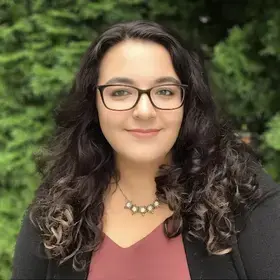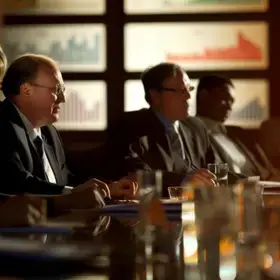By Dr. Steven Cohen, Senior Vice Dean, School of Professional Studies; Professor in the Practice of Public Affairs, School of International and Public Affairs
It is indeed ironic that Democratic New Jersey Governor Phil Murphy, Republican Representative Nicole Malliotakis from Staten Island, and Democratic Representative Josh Gottheimer from New Jersey all share intense opposition to congestion pricing south of 60th street in Manhattan. These political enemies have found bipartisan unity in their fact-free analysis of congestion pricing. Their opposition is even echoed by the architect of the program, disgraced former New York State governor Andrew Cuomo. In Cuomo’s case he questions the timing but not the policy, but like most opponents only mentions the costs of the fee and ignores the benefits of less congestion. All these folks know that opposing a toll or a tax is good politics even if it is bad public policy. The drumbeat of opposition to the fee has turned the public against it, since the overwhelming political rhetoric only mentions costs, exaggerates potential negative impacts, and completely ignores benefits. These politicos are shamelessly pandering for political gain, although we have sadly gotten used to politicians without a sense of shame. I’ve written on this issue a few times, so let me revive some of those previous posts. As I observed in June, 2022:
“Several years ago, the Community Service Society studied the distributional impact of congestion pricing and found that: “…just four percent of the city’s outer-borough working residents commute to jobs in Manhattan by vehicle and could be subject to a congestion fee. This compares with 56 percent of outer-borough residents who use mass transit to commute to work in Manhattan…” A funding design that reduced traffic and provided additional funding for mass transit would redistribute wealth from rich people to benefit working-class commuters. Making mass transit more attractive provides a wide variety of positive environmental, social, and economic impacts. As New York City reopens, we need to charge motor vehicles for using crowded street space. The fact is we are not making more Manhattan streets, and we are trying to drive more vehicles on those streets. Traffic is once again horrific, and we need to figure out some way to encourage people to leave their cars and take the subway.”
Later, when New Jersey Governor Murphy began his pathetic political pandering, I wrote that:
“Here we go again. New York’s local media is full of absurd, unverified theories about the negative impacts of a fee designed to charge to use the scarce and crowded streets of Manhattan south of 60th street and use that cash to subsidize mass transit. Like clockwork, minor politicos from Brooklyn, Queens, New Jersey, and the Bronx complain about the “attack” on working New Yorkers. Big time politicos lead the charge: New Jersey’s Governor talks about “double taxation.” Untested concepts are accepted as facts while people worry about drivers hogging parking spots north of 60th street. Perhaps most ridiculous is the idea that congestion pricing is a regressive tax. Here’s a newsflash: Nearly all the people who drive into the city are people senior enough in their organization to get subsidized parking or rich enough to pay for parking… A real leader would encourage his residents to do what 96% of New Yorkers do: Take mass transit into Manhattan! Murphy probably doesn’t bother advocating for mass transit because most Jerseyites are already using it. According to a piece by Dave Colon appearing on StreetsBlog NYC in October 2021: “New Jersey commuters who drive into the so-called Central Business District of Manhattan comprise a small group of wealthy people, according to Census data crunched by the Tri-State Transportation Campaign and released on Monday — a stinging rebuke to caterwauling New Jersey politicians who claim that congestion pricing is an unfair tax on the hard-working middle class. The pro-transit group looked at commuting patterns in 21 legislative districts in the Garden State that are closest to Manhattan and found that, on average, just 1.6 percent of commuters from those areas drive into the CBD for work — and the median income of those commuters was $107,996 per year, or roughly 22 percent higher than the $88,407 median for commuters who use transit. In short, New Jersey drivers who use the Holland or Lincoln tunnels or the George Washington Bridge to get to Manhattan below 60th Street are few in numbers but large in wallet.”
I revive these studies to inject some facts into the biased media coverage of congestion pricing which typically interviews people driving in lower Manhattan and asks them what they think about the congestion tax. I’d like to see an interview with someone gridlocked for an hour trying to get crosstown in their car. Ask those folks how much they’d pay to move a little faster across lower Manhattan.
There undoubtably will be unanticipated negative impacts of the new policy. Every new policy and product have downsides you can’t predict without experience. Who knew that social media would be addictive? Who knew that the Superfund law would discourage development on inner city brownfields and encourage development of exurban greenfields? The point is we can adjust policies and products to address negative impacts. But congestion pricing’s underlying policy design is sound. A congestion fee will generate revenue for mass transit and reduce traffic jams. Surge pricing works. It works for Uber and it works for Jet Blue. It influences demand and enhances service and revenue.
New York City’s mass transit system is the equivalent to the human system that circulates our blood. It is an essential component of our virtually organic economic circulatory system. It needs additional maintenance, modernization and expansion and our region simply can’t afford to draw significantly more funding from current revenue streams to provide adequate funding. There is a limit to what can be collected from the farebox, although the MTA must figure out a way to stop people from boarding busses through the back door for free and jumping turnstiles. At the same time congestion in our central business district, even with today’s hybrid office environment, is still intense and needs to be reduced. The value of the labor lost in traffic delays is partially recovered by charging a congestion fee that speeds traffic.
The MTA has finally set June 30th as the date congestion pricing begins. The courts and congress should stay away and let this critical program begin. The alternative is a decaying subway system and increased traffic jams. The subway system is still using a mechanical traffic signal system that is a century old. People in wheelchairs and with baby strollers navigate an inaccessible system that is a throwback to the bad old days when no one cared about accessibility. Assuming the congestion fee is finally implemented, the inefficient and incompetent management of our mass transit system should be held accountable for efficiently spending every nickel of this new source of revenue. We already know that mass transit construction in New York is far more expensive than any other city in the world. The media should shine a bright spotlight on the use of these new funds and this increased scrutiny should help ensure that we get more bang for our transit buck than we now receive.
Congestion pricing was invented by my late Columbia colleague Bill Vickery, paradoxically, to reduce crowding in the subways in the 1950s. Many years after he developed this concept he won the Nobel Prize in Economics for the genius behind the proposal. Several other large cities around the world have implemented this policy and it has worked wherever it had been tried. Certainly, the policy needs adjustment for local conditions wherever it appears. The price charged, exemptions, discounts, hours, and days it is in effect can all be adjusted to address unanticipated impacts.
As a long-time professor of public management, management, and sustainability management, I am well aware of the inefficiencies and dysfunctions present in the management of New York’s mass transit and particularly the MTA’s poor record of contract management. Some of this is due to state and city regulation of contracting and construction, and some of it due to MTA bureaucracy, dysfunctional work rules, corruption, and waste. It is reasonable to ask if we are simply sending “good money after bad.” My view is that despite the waste in the system the demand for better service and new infrastructure such as station elevators and computer-controlled traffic signals requires additional revenues. We will get more out of those revenues if some of these system dysfunctions can be eliminated, but one way or the other new resources are needed to bring our mass transit system into the now twenty-four-year-old twenty first century.
Views and opinions expressed here are those of the authors, and do not necessarily reflect the official position of Columbia School of Professional Studies or Columbia University.
About the Program
The Columbia University M.S. in Sustainability Management program offered by the School of Professional Studies in partnership with the Climate School provides students cutting-edge policy and management tools they can use to help public and private organizations and governments address environmental impacts and risks, pollution control, and remediation to achieve sustainability. The program is customized for working professionals and is offered as both a full- and part-time course of study.


